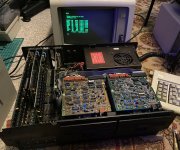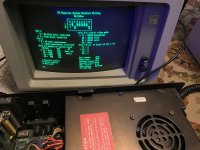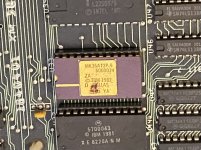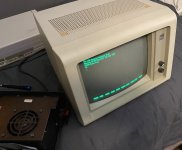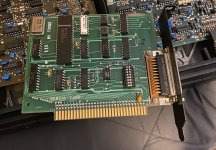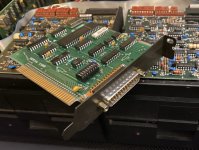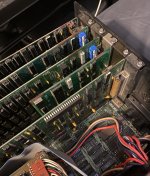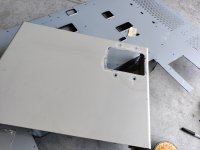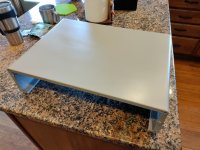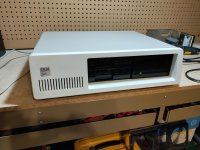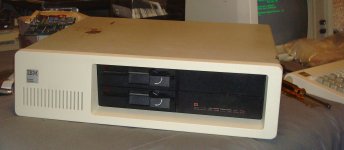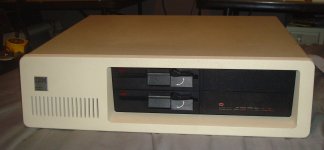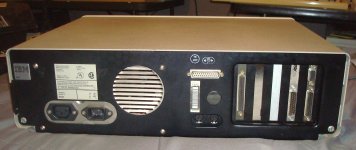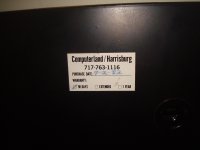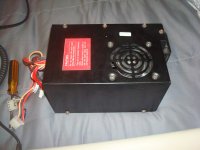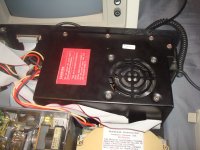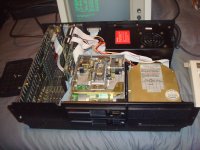compaqportableplus
Veteran Member
Wow, the original single sided drives was an absolute PAIN IN THE ASS to rebuild! But we got it. It fought me tooth and nail every step of the way.
Here it is after successfully booting PS-DOS 2.1 from a single-sided formatted floppy!
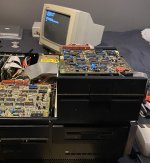
First, the latch mechanism was broken (common on early Tandons). I had a slightly broken TM-100-2A and was able to scavenge the needed parts from that.
Next issue was the stepper motor was almost completely seized, so completely tore the drive and motor apart to re-lubricate it. That obviously misaligned the heads, so I hooked it to my IBM XT and used ImageDisk to realign it.
BUT, at first I was not able to get it aligned at all. It turns out it was a combination of the pressure pad over the head being loose, the track-0 sensor being misadjusted, AND the stepper motor was misaligned as well. With all of that out of wack, it was impossible to align the drive with the adjustment screw alone. I was just about to throw in the towel, but I’m so glad I didn’t.
This success gives me confidence to finally tear apart the original DS drive in my other Rev A 5150, because the stepper motor is VERY stiff on that one, yet somehow the drive still works most of the time (though it sounds awful).
So there you have it, an original single-sided Tandon saved! This drive was manufactured in late 1981 as far as I can tell. I will set it up as the A: drive in this PC, and I will install a DS drive as B: for running programs.
Here it is after successfully booting PS-DOS 2.1 from a single-sided formatted floppy!

First, the latch mechanism was broken (common on early Tandons). I had a slightly broken TM-100-2A and was able to scavenge the needed parts from that.
Next issue was the stepper motor was almost completely seized, so completely tore the drive and motor apart to re-lubricate it. That obviously misaligned the heads, so I hooked it to my IBM XT and used ImageDisk to realign it.
BUT, at first I was not able to get it aligned at all. It turns out it was a combination of the pressure pad over the head being loose, the track-0 sensor being misadjusted, AND the stepper motor was misaligned as well. With all of that out of wack, it was impossible to align the drive with the adjustment screw alone. I was just about to throw in the towel, but I’m so glad I didn’t.
This success gives me confidence to finally tear apart the original DS drive in my other Rev A 5150, because the stepper motor is VERY stiff on that one, yet somehow the drive still works most of the time (though it sounds awful).
So there you have it, an original single-sided Tandon saved! This drive was manufactured in late 1981 as far as I can tell. I will set it up as the A: drive in this PC, and I will install a DS drive as B: for running programs.
Last edited:

